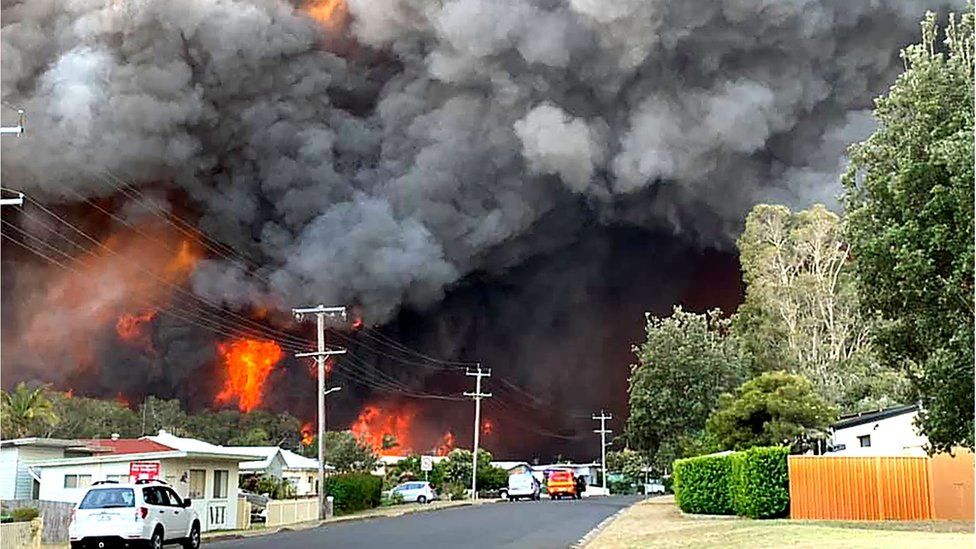Grasping Bushfire Preparedness: The Duty of a BAL Assessment in Risk Reduction
Grasping Bushfire Preparedness: The Duty of a BAL Assessment in Risk Reduction
Blog Article
The Value of Bushfire Monitoring in Fire Protection
In the world of fire defense, the relevance of effective bushfire management can not be underrated. As areas worldwide face raising instances of wildfires, the aggressive approach to stopping and mitigating these natural disasters via critical bushfire administration methods has emerged as a critical element. Beyond the instant threat to human life and building, the interplay between bushfire monitoring and environmental preservation, area participation, and climate change poses complex obstacles that demand extensive remedies.
Value of Proactive Bushfire Avoidance
Aggressive bushfire prevention approaches are crucial in minimizing the ravaging influences of wildfires on communities and communities. One key element of proactive bushfire prevention is fuel administration.
Educating the public on fire safety techniques and advertising neighborhood understanding regarding the significance of bushfire avoidance are crucial parts of positive methods. Eventually, aggressive bushfire avoidance plays a considerable duty in protecting areas and communities from the destructive influences of wildfires.
Role of Community Engagement in Fire Defense
Involving the area in fire security efforts is essential to enhancing the efficiency of positive bushfire avoidance strategies. Neighborhood interaction plays a critical duty in promoting a cumulative understanding of the threats postured by bushfires and the significance of preparedness measures. By involving regional residents, authorities can disseminate vital details on fire safety practices, evacuation treatments, and early caution systems, equipping people to take aggressive actions to guard their residential properties and lives.
By cultivating a culture of readiness and collaboration, areas can strengthen their capability to respond efficiently to bushfire emergency situations, minimizing the influence on lives and homes. Eventually, neighborhood interaction is a foundation of comprehensive fire security techniques, emphasizing the importance of collective action in securing vulnerable areas from the threat of bushfires.
Relevance of Wild Animals Preservation in Bushfire Administration
Conservation of wildlife plays a vital duty in effective bushfire management approaches, making sure the protection of varied ecological communities and biodiversity in fire-prone areas. Wildlife preservation is crucial as it contributes to the total resilience of communities, aiding in their capacity to withstand and recoup from the impact of bushfires. By conserving environments and safeguarding numerous species, the all-natural equilibrium within these environments is preserved, which is vital for their long-term health and wellness and sustainability.
Additionally, wildlife preservation also aids in minimizing the risk and strength of bushfires. Healthy environments with well-preserved wild animals populaces can work as natural firebreaks, reducing down the spread of fires and restricting their destructive potential (BAL Report). Specific pet species, like delving animals or birds that spread out seeds, play distinct roles in avoiding fires or helping in the post-fire regeneration of habitats
Incorporating wild animals preservation right into bushfire management methods is why not try here not just vital for securing biodiversity but additionally for advertising the overall health and wellness and strength of environments in the face of boosting fire hazards.
Benefits of Strategic Fuel Decrease Programs
Strategically implementing fuel decrease programs is essential in mitigating the danger and influence of bushfires in fire-prone regions. These programs involve regulated burning, mechanical clearing up, and various other techniques to decrease the amount of flammable plants readily available to sustain wildfires. By strategically minimizing gas loads in crucial areas, such as close to domestic communities or critical framework, the intensity and spread of bushfires can be considerably lowered.
One of the primary advantages of gas reduction programs is the improvement of overall fire strength in an environment. By producing tactical gas breaks and minimizing the continuity of vegetation, these programs aid to interrupt the path of a bushfire, making it less complicated for firefighters to have and extinguish the blaze. Furthermore, gas reduction programs can shield biodiversity by stopping excessively extreme fires that can ravage environments and endanger wild animals populations.
Moreover, these programs can also guard human lives and home by lowering the danger of catastrophic fires that pose a significant threat to areas. Inevitably, calculated fuel reduction programs play a vital duty in proactive navigate to this website bushfire management and promoting a much safer environment for both people and nature.
Influence of Environment Adjustment on Bushfire Threat

Higher temperature levels result in drier plants, making it extra vulnerable to ignition. Lowered rainfall in particular regions lengthens drought problems, even more increasing the flammability of the landscape. Additionally, the changing environment has changed wind patterns and weather, leading to more unpredictable fire actions and fast fire spread.
As the environment remains to alter, the regularity and strength of bushfires are anticipated to rise, necessitating a adaptive and positive strategy to bushfire management. Strategies have to develop to represent the altering danger landscape, including climate forecasts and considering long-lasting strength in fire management preparation. Addressing the effect of environment change on bushfire risk is vital in creating reliable techniques to protect lives, home, and the setting.
Verdict
To conclude, positive bushfire avoidance, neighborhood engagement, wildlife preservation, strategic gas reduction programs, and consideration of climate change are vital parts in reliable fire protection. By executing these methods, we can better handle bushfire threats and protect both human lives and the environment. BAL Report. It is necessary that stakeholders interact to focus on these procedures to reduce the damaging influence of bushfires on ecological communities and communities

As the climate proceeds to change, the regularity and strength of bushfires are expected to climb, demanding a aggressive and flexible method to bushfire management.In conclusion, aggressive bushfire prevention, neighborhood engagement, wild animals conservation, calculated gas reduction programs, and consideration of climate adjustment are critical elements in efficient fire security.
Report this page